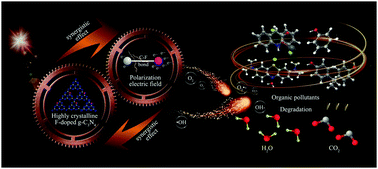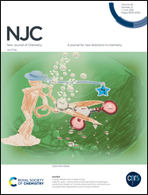A fluorine induced enhancement of the surface polarization and crystallization of g-C3N4 for an efficient charge separation†
Abstract
Inspired by electric field engineering applied to photocatalysts, herein, the synergy of highly crystalline and surface polarization electric field generated by introducing fluorine (F) atoms in graphitic carbon nitride (g-C3N4) played a crucial role in enhancing charge separation. Systematic experiments and theoretical analysis proved that the introduction of F atoms with the most electronegativity can effectively induce charge density promotion to generate high-crystallized g-C3N4, which usefully enhance the charge conductivity, thus boosting the charge transfer on the C–F bond, forming a surface polarization electric field. This field is favorable for the separation of holes and electrons, finally increasing the charge density and further improving the crystallinity. Therefore, the improved photodegradation performance of F-doped g-C3N4 for phenol, bisphenol A, diclofenac sodium, and methylene blue under simulated solar irradiation are attributed to the synergistic effect of high crystallinity and surface polarization electric field. This work provides an innovative strategy that could combine the crystal structure with electric field engineering, and may stimulate in-depth insights for green degradation.



 Please wait while we load your content...
Please wait while we load your content...